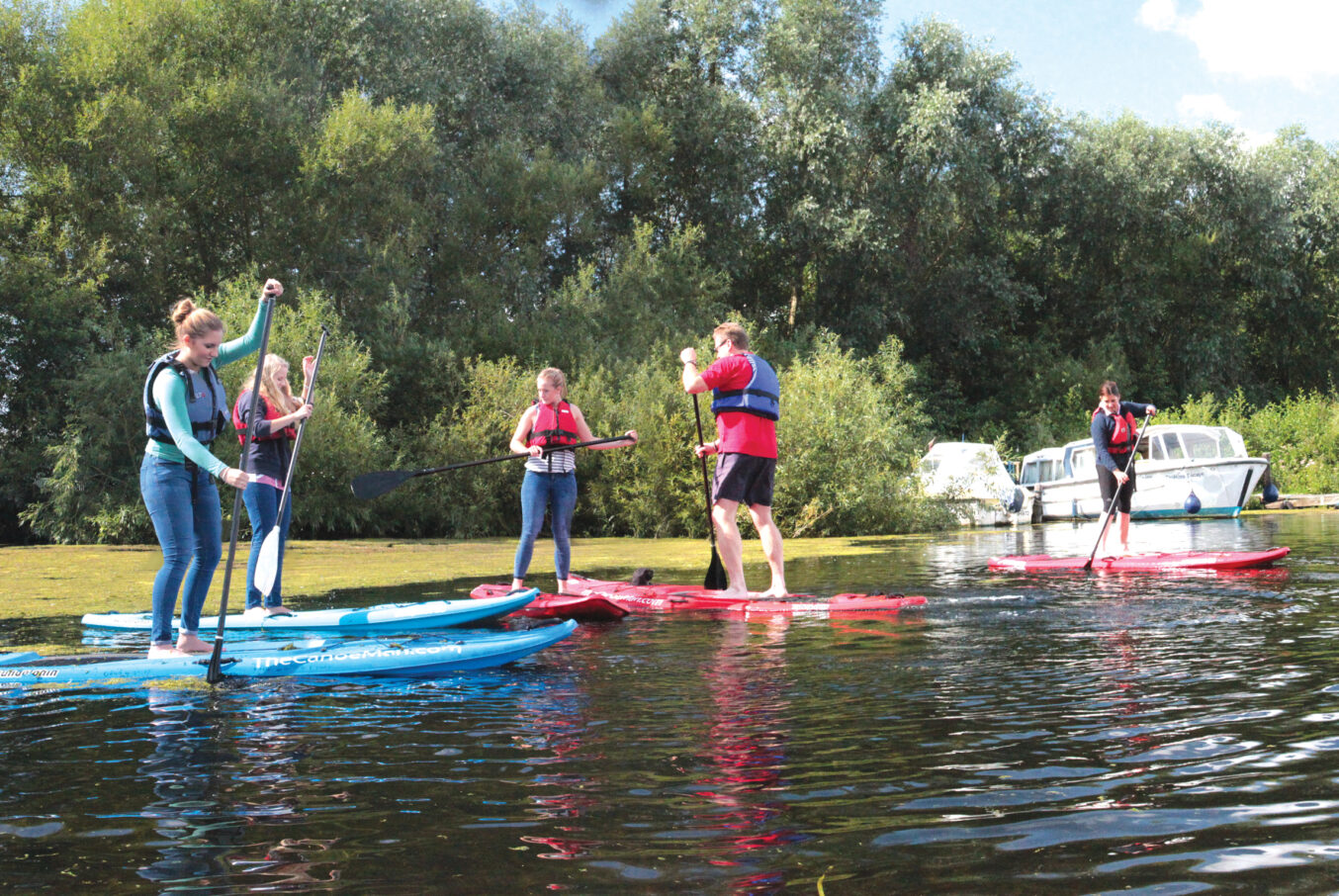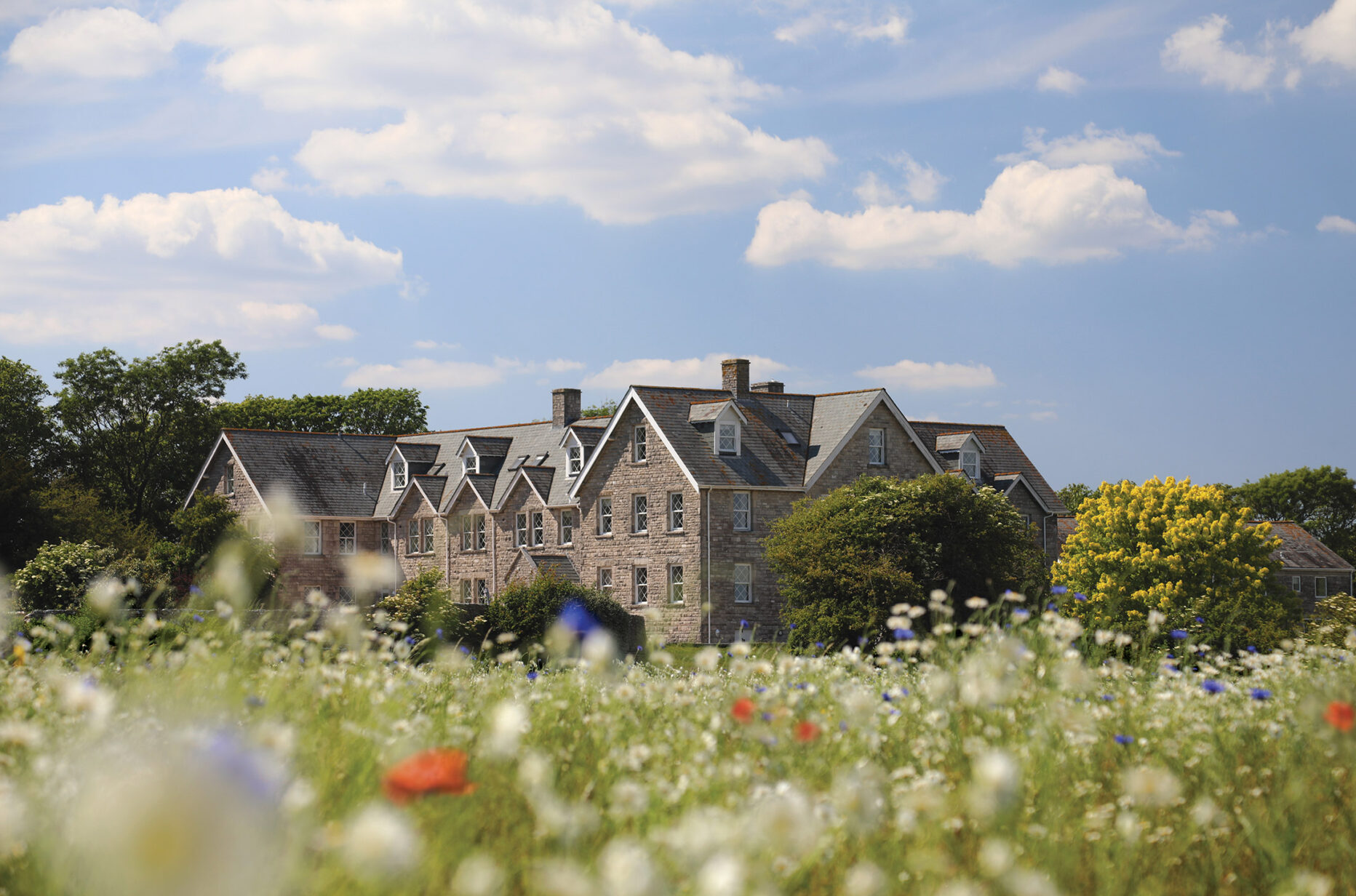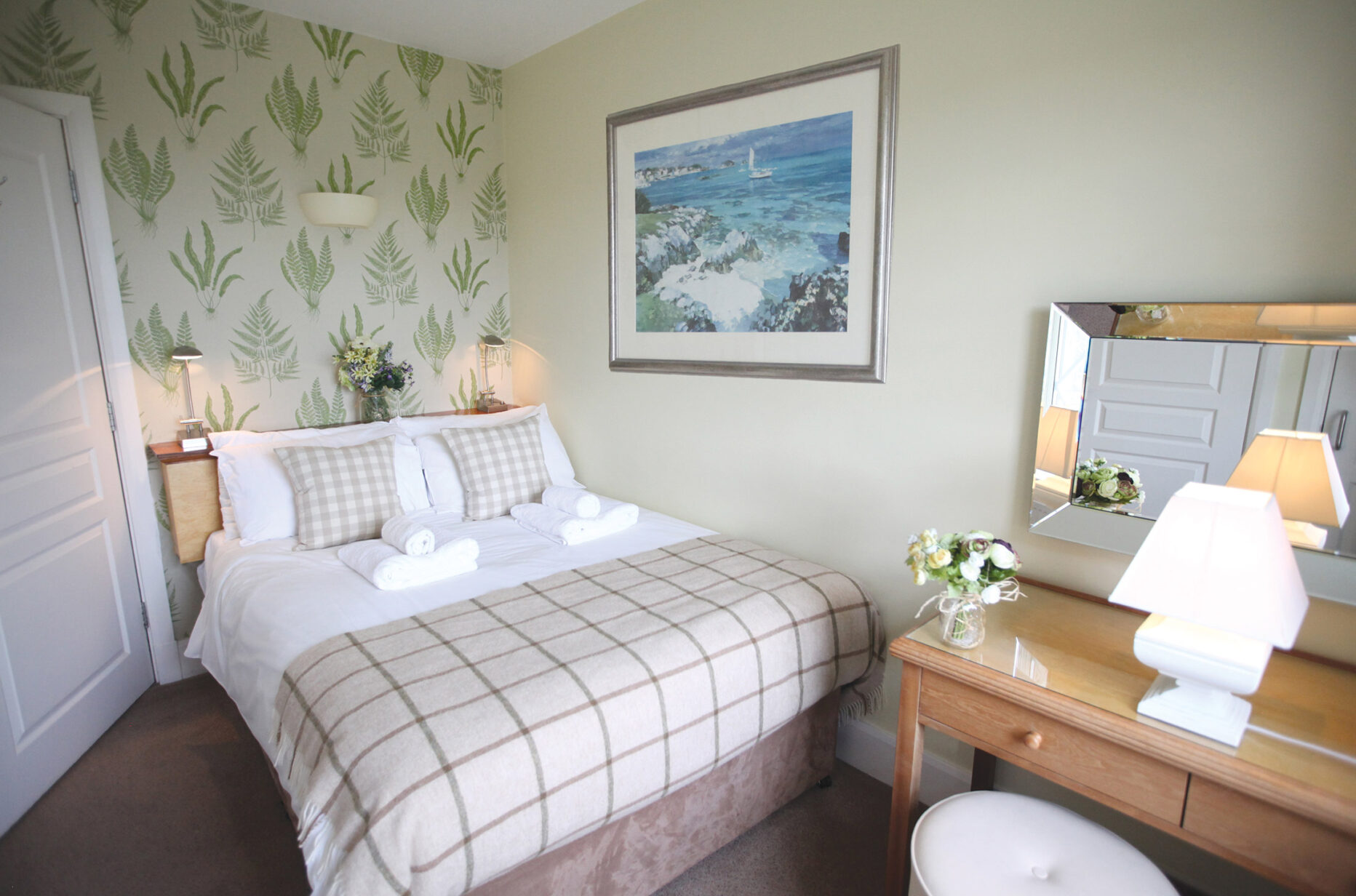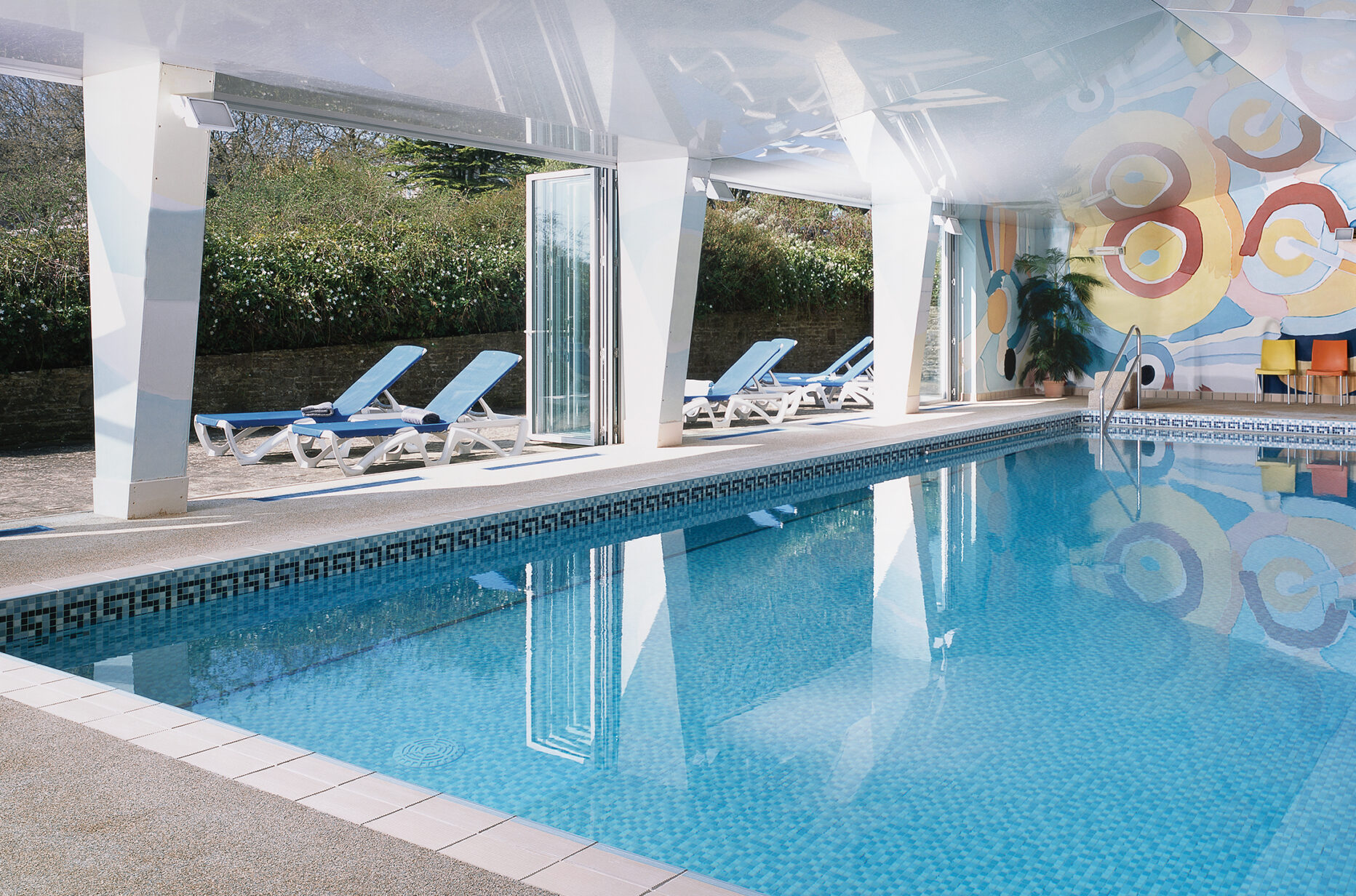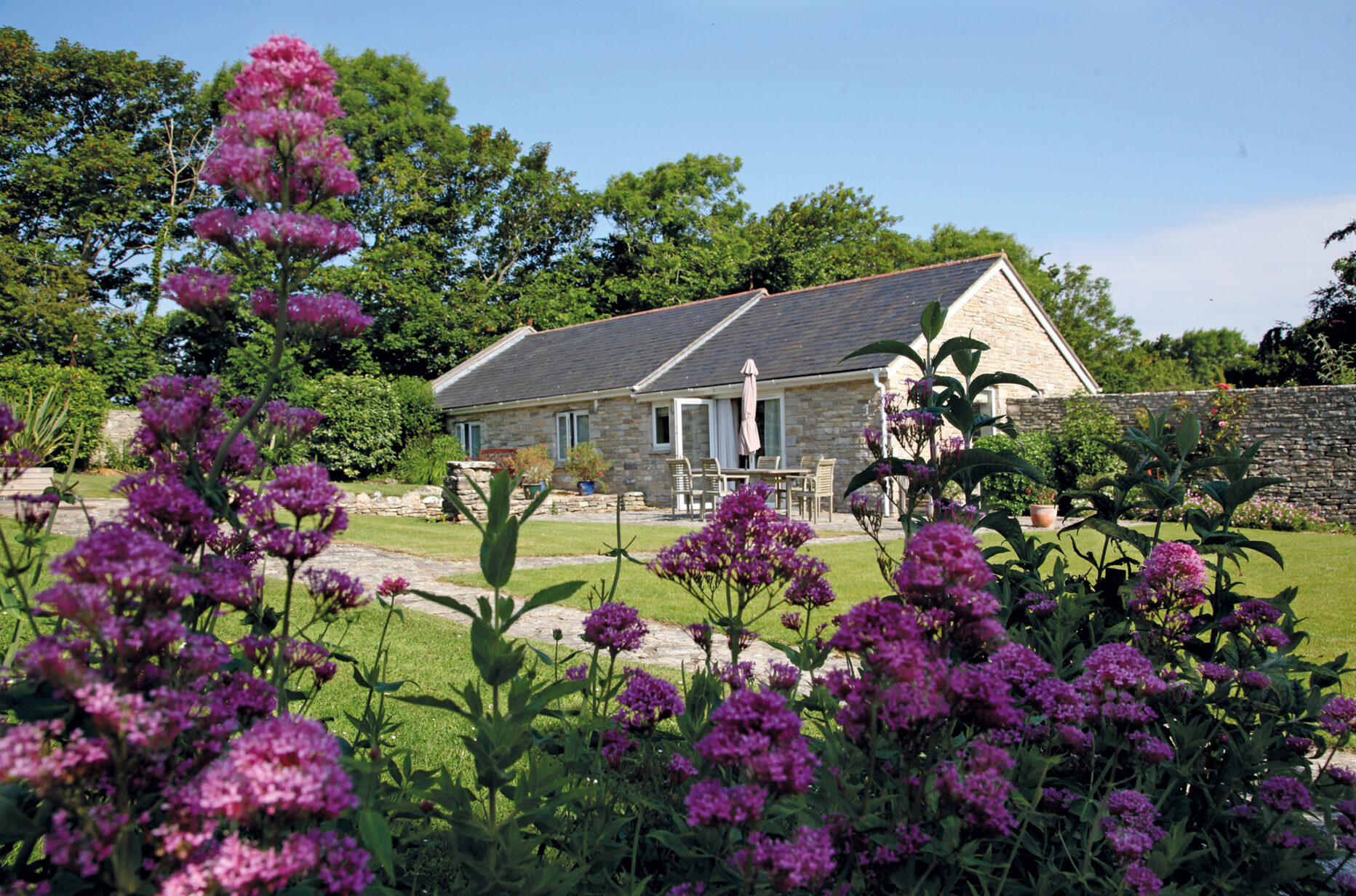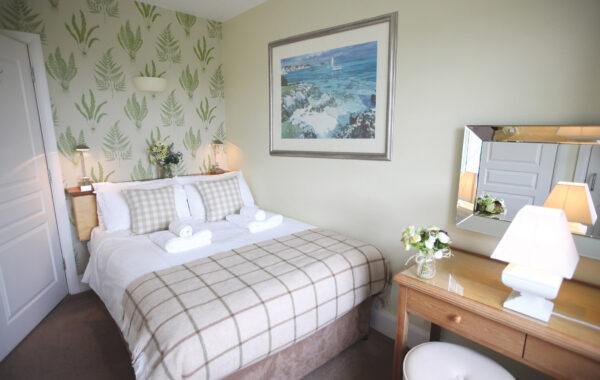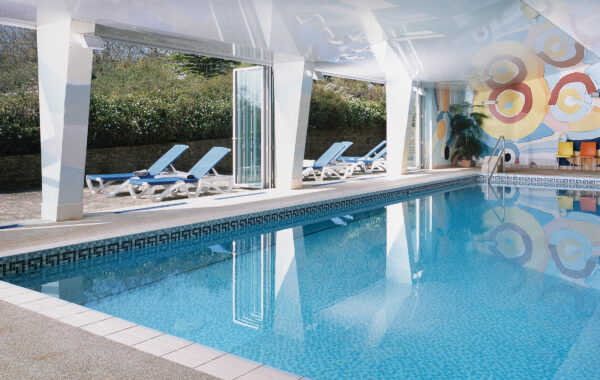-
29 cottages and apartments in Dorset
-
Clubhouse and family games room
-
Nestled in the rolling Purbeck Hills
-
Views of the Needles and Isle of Wight
-
15-acre grounds surrounded by National Trust land
-
Super walking country
-
A geologist’s paradise
-
History aplenty and museums galore
Discover Dorset
Less than ten miles south west of Bournemouth lies the Isle of Purbeck – a designated Area of Outstanding Natural Beauty, and the source of the fine grey stone and unique dark green marble that bear its name. Rising steeply, in places to over 600 feet, within a mile of the sea, the Purbeck Hills create a dramatic landscape dominated by the striking ruins of Corfe Castle.
Here you will find Langton House, a former school now restored and converted into comfortable apartments and cottages. It is located on the edge of the Purbeck village of Langton Matravers, overlooking the English Channel on the slopes above Swanage, with distant views of the Needles and the Isle of Wight.
Standing in 15 acre-grounds, and surrounded by National Trust land, Langton provides a convenient base from which to explore the beautiful countryside to the south of Dorset and beyond.
Learn more about Thomas Hardy
Bookworms will likely know that author Thomas Hardy, who wrote classic such as ‘Far from the Madding Crowd’ and ‘Tess of the d’Urbervilles’, was born in Dorset. In fact, he spent the majority of his life here, which is clear in his work, as the area’s landscape and local events served as constant inspirations.
The Dorset County Museum in Dorchester has the world’s largest collection of Hardy paraphernalia. There, you can see various photographs, manuscripts, diaries and books, which once belonged to the writer. That’s not the only collection at the museum, though, as it has exhibits on geology, wildlife, history and farming.
Go fossil hunting on the Jurassic Coast
The 95-mile long Jurassic Coast is a wannabe archaeologist’s dream, as there are plenty of fossils to be found. The rock features here date back to the Cretaceous, Triassic and Jurassic periods, and are fascinating to look at, even if you’re not keen to have a go at fossil hunting yourself.
Discover Dorset’s fascinating history
Dorset has a vibrant past, so it’s no surprise the National Trust has such a huge presence here. Of the many famous landmarks and properties situated in the county, don’t miss the Cerne Giant, a huge naked man carved into the hillside or Thomas Hardy’s Cottage in Higher Bockhampton, where the famous writer was born.
Don’t forget to see Clouds Hill, T.E. Lawrence’s rural retreat and Kingston Lacy, a luxurious stately home, complete with its own Japanese garden, too. Plus, there’s the Tolpuddle Martyrs Museum, which tells the story of how modern-day trade unionism began.
Enjoy a festival in Swanage
Time your holiday right and you’ll get the chance to enjoy one of the many festivals that take place in Swanage every year. For example, there’s the Swanage Jazz Festival, which takes place over a weekend in July, is extremely popular and must not be missed. Then, in late July/early August, the colourful and cheerful Swanage Carnival and Regatta hits the town – it’s a wonderful family event filled with lots of different things to see and do. If you visit in September, you could experience the Swanage Folk Festival, which features a variety of musical acts, children’s activities, a craft fair and Morris dancing. What’s not to love?
Take the kids somewhere special
Dorset is the perfect location for a family holiday, as there’s so much to do nearby. If it’s the beach they’re interested in, the Blue Flag beaches at Sandbanks and Swanage are wonderful places to go for a dip, while Kimmeridge is the best beach to search for fossils on.
Got a little one who’s always wanted a pony? You can go horse riding on the beach at Studland, an experience they’ll never forget. If your child’s into armoured vehicles instead, Bovington Tank Museum is sure to keep them entertained.
Shops and restaurants
Swanage is a busy and thriving community and is well served with an array of shops, bars and restaurants to suit all tastes (and budgets).
For true shopaholics, Bournemouth Town Centre has a pedestrianised shopping precinct with a range of shops and boutiques.
On-site facilities
Within Langton’s 15 acres of grounds are a tennis court, all- weather bowling green, nine hole pitch and putt course, croquet lawn, outside play equipment (for children under five), and a separate building which houses a heated 12 x 5 metres swimming pool and sauna.
There is free Internet and Wi-Fi access.
Properties in Dorset
A former school, Langton House was, apparently, something of a harsh, unforgiving academy – all cold showers and 10-mile cross-country runs. Not any more! Today, Langton’s 29 apartments and cottages house guests in total up-to-the-minute comfort, while the site’s communal facilities include an indoor swimming pool, sauna, sun terrace, tennis court, a nine-hole pitch-and-putt golf course, a children’s play area, a croquet lawn, an all-weather bowling green, and a clubhouse with a selection of games. Of course, if you feel the need for a muddy 10-mile slog or a bracing shower, these can be arranged…
The main house has been converted into 25 one, two and three-bedroom apartments, one of which, a two-bedroom apartment, is adapted for use by accompanied disabled holiday-makers.
There are 2 two-bedroom cottages beside the clubhouse building. Nearby is a separate two-bedroom detached cottage which has also been adapted for the use of accompanied disabled holidaymakers.
The spacious clubhouse accommodates an information room with DVD library, billiards room and family games room with table tennis, bar billiards and football machine – all of which are available to use free of charge.
Cottages
There are just three cottages on site, positioned away from the main building. One on either side of the clubhouse building accepts groups of up to six, while the third is a detached, four-guest property adapted for wheelchair access.
Cottages
Book a tourThe site overlooks the English Channel and stands in 15 acres of grounds, surrounded by Dorset countryside. The cottages are the most spacious accommodation on site. Each has two bedrooms, one double and one twin, along with lots of space, making them a good option for families. All three cottages are pet-friendly, while one has also been adapted for wheelchair access. The two six-guest properties are two storey and are equipped with a double sofa bed, meaning they can easily accommodate up to six people. The adapted cottage is single storey and features a large open-plan layout with the kitchen, dining and living rooms easily accessible, one from the other.
The cottages at Langton offer comfortable, communal living, plus a degree of privacy when you need it. As well as families, the properties are ideal for groups of friends. As with all the holiday units at Langton, the cottages are furnished and decorated in a homely, restful style. Everything is where you’d expect it to be, and works as you would expect it to. The aim is to make you feel at home, and relaxed, as soon as you walk in!
Facilities/equipment
All properties have en-suite shower rooms for extra convenience, as well as separate bathroom facilities. The open-plan kitchen and dining areas are an efficient use of space. The rooms are fully furnished and each kitchen is equipped with utensils, appliances, crockery and everything else you will need.
Apartments
Langton’s large 19th-Century main building has been converted into 21 modern apartments. They are reasonably spacious and, depending on their size, can sleep anywhere between two and six guests. There are one, two and three-bedroom properties on offer.
Apartments
Book a tourA former school (ex-pupils include author Ian Fleming), Langton House was, apparently, something of a harsh, unforgiving academy – all cold showers and 10-mile cross-country runs. Not anymore! Today the main house is comprised of 21 modern yet characterful apartments, plus a host of communal facilities. The majority of the apartments are single storey and many of them enjoy good views south. Eight of the apartments are pet-friendly and one has also been adapted for wheelchair access. Most of them have open-plan interiors and some have additional details such as dormer windows which add to the charm and display the undulating landscape beyond the walls.
The apartments range from one bedroom to three bedrooms and the largest can sleep six guests. The two and three-bedroom apartments are comfortable and practical for family holidays while the one-bedroom apartments are better suited to couples or smaller family groups. Elegant furnishings keep things modern, with kitchens and open-plan living areas forming part of a practical living space while little details and a careful homely touch maintain the original charm of this Purbeck stone building.
Facilities/equipment
All bedrooms sleep two people in either a double or separate beds, but some of the one and two-bedroom apartments also come equipped with a Sofa bed or Z-bed in order to accommodate extras. All apartments are fully furnished and have a kitchen equipped with everything you could need.
Studios
Five one-bedroom studios located within the main house complete this site, each providing comfortable accommodation for two guests. Bedrooms are either double or twin, making it the perfect romantic retreat or simply providing a great country break with a friend or family member.
Studios
Book a tourWhatever the nature of your holiday, the studio apartments at Langton provide the perfect base from which to explore the surrounding Purbeck scenery, and some of the studios enjoy good views that serve as a constant reminder of the elegant beauty that lies outside your door. For couples wanting to explore the exquisite countryside and Dorset coast, these cosy studios couldn’t be better, situated amongst rolling landscapes and within easy reach of the dramatic Jurassic coast and charming seaside town of Swanage. These single-storey properties are neat and have a comfortable, open-plan living space ready and waiting for you to snuggle down in after a tiring but pleasurable day exploring.
Facilities/equipment
All studios are equipped with a kitchen, dining area and living area, fully furnished with all you need and everything to hand for a relaxing get-away. The bedrooms are either double or twin and there is space enough to accommodate a cot in three of the five studios if you’re holidaying with a little one.
You couldn’t ask for a more perfect holiday home location than that of Langton House. Boasting amazing views of the English Channel with the Isle of Wight in the distance, and backed by rolling hills, Langton House will take your breath away.
It’s not just the views and exterior that are beautiful, though, as our interior photos show. These apartments and cottages are homely, with traditional décor and living areas that feel bright, fresh and spacious. On-site facilities include a heated swimming pool, which is an absolute dream to come back to at the end of a long day spent exploring Dorset.
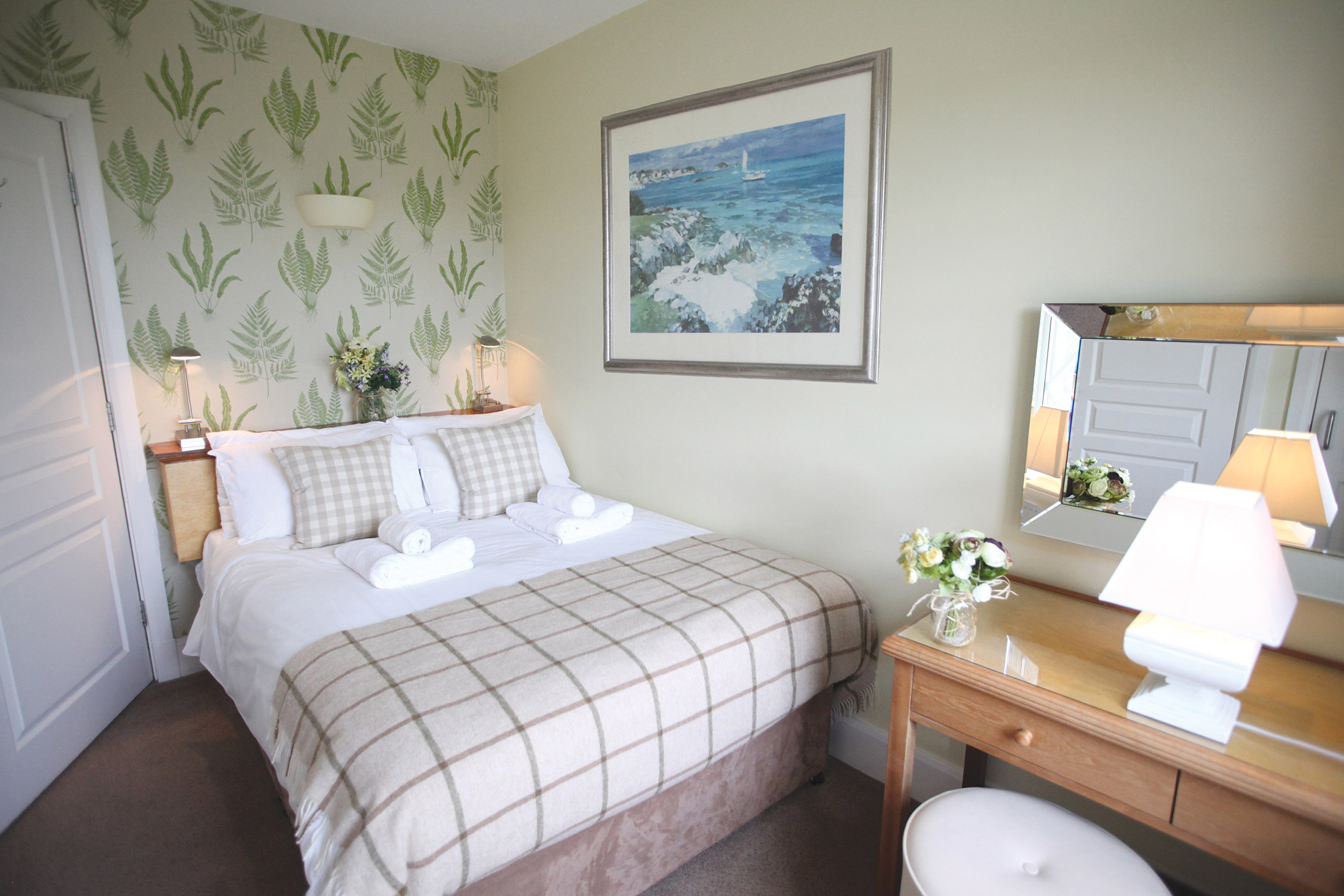

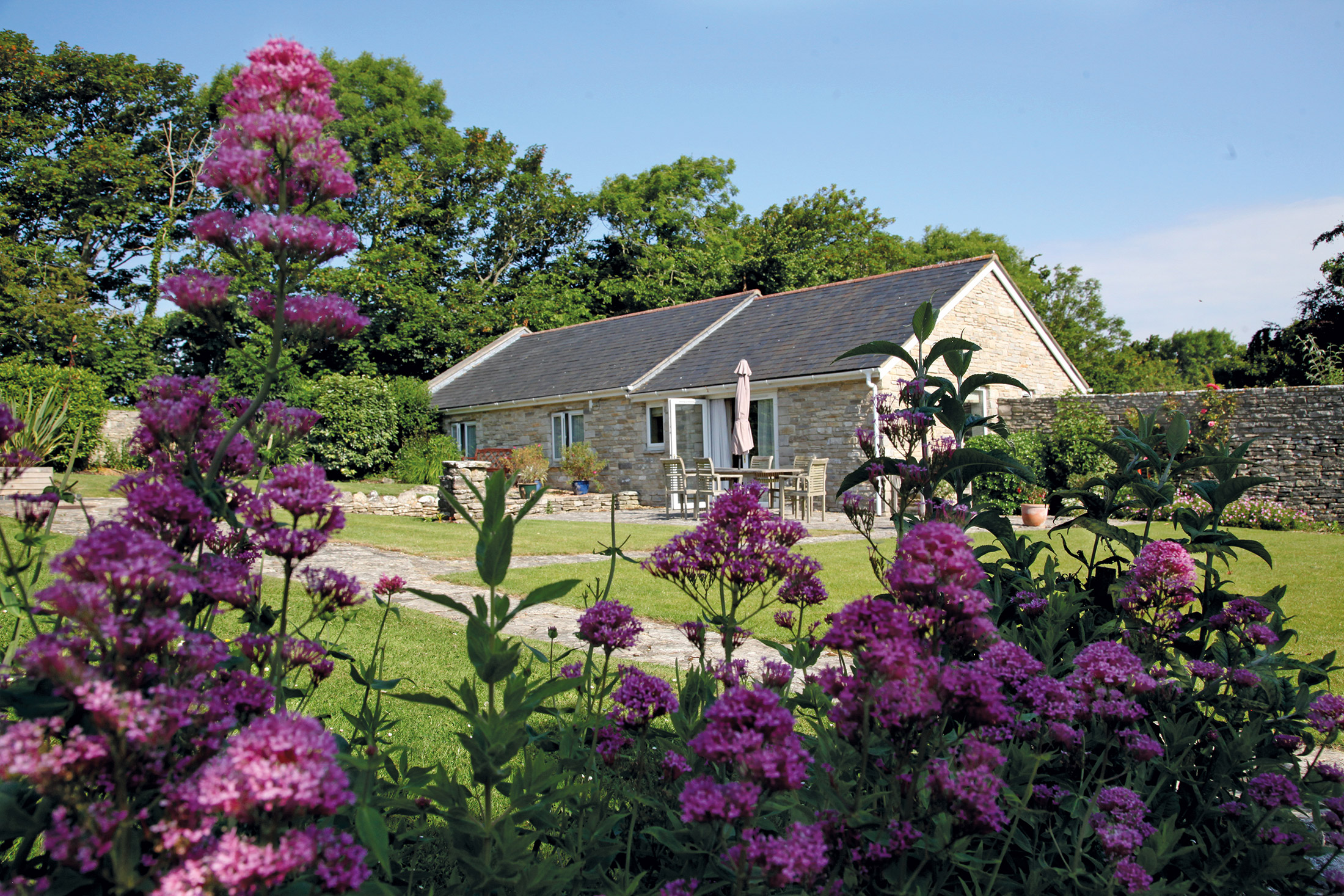
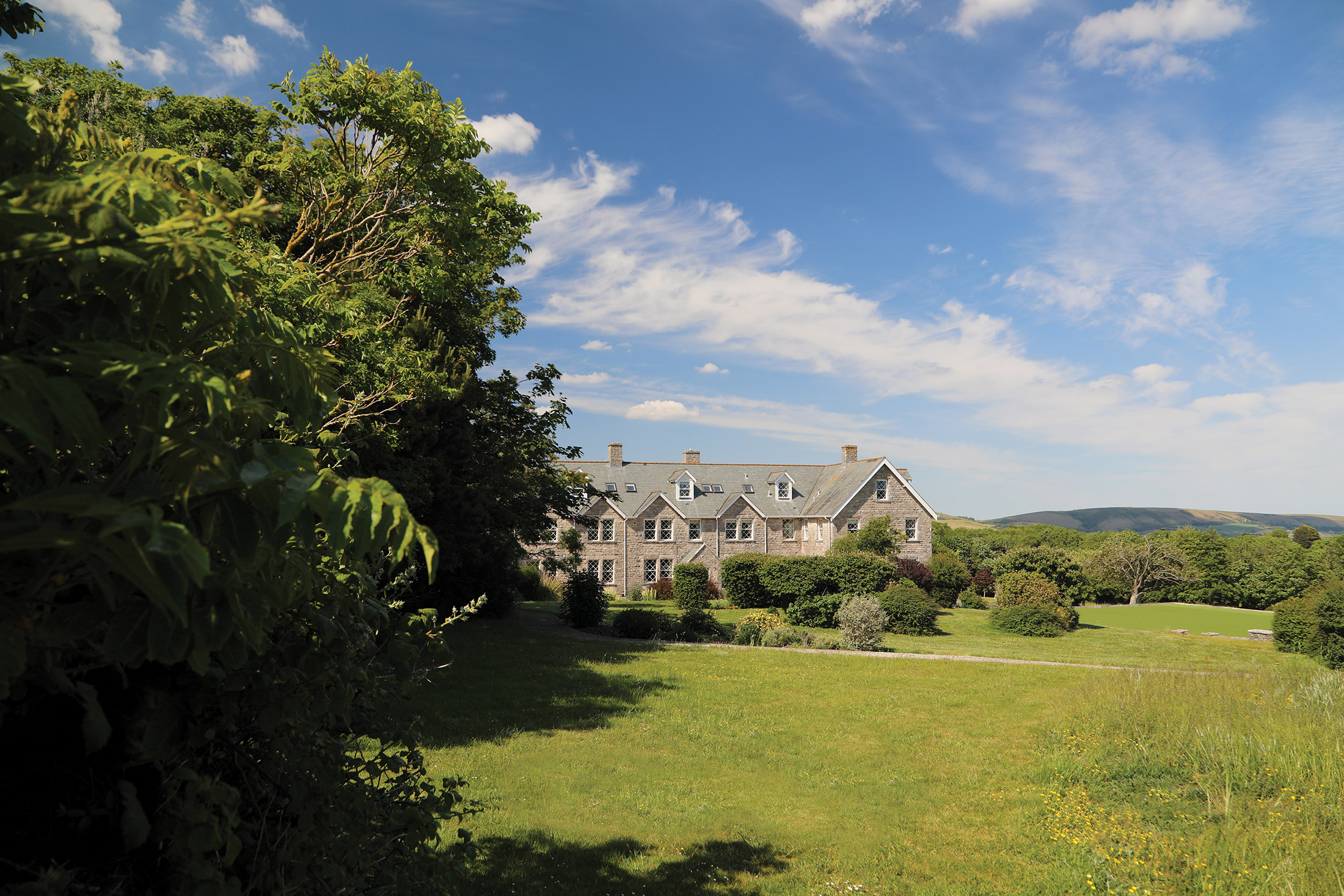
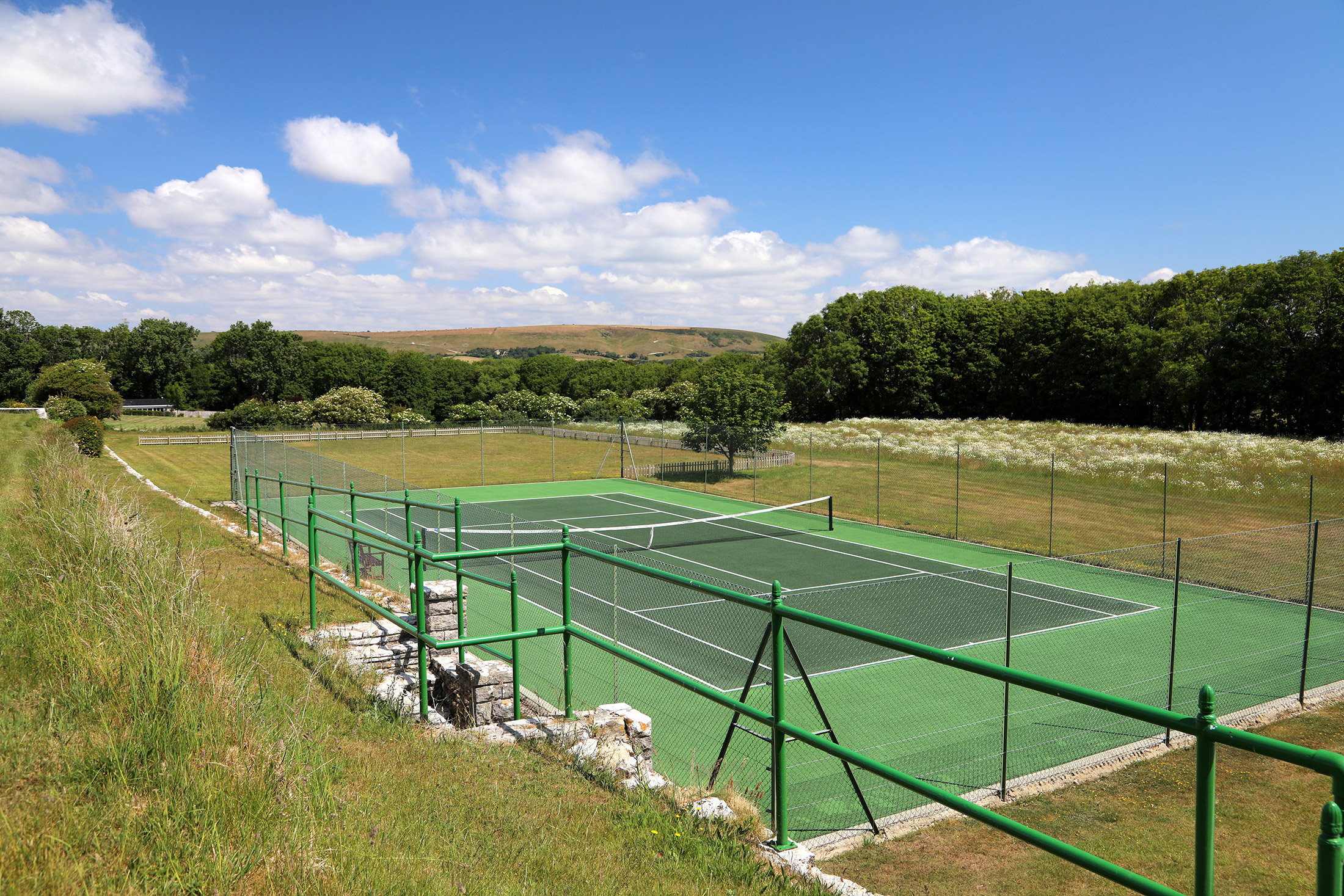
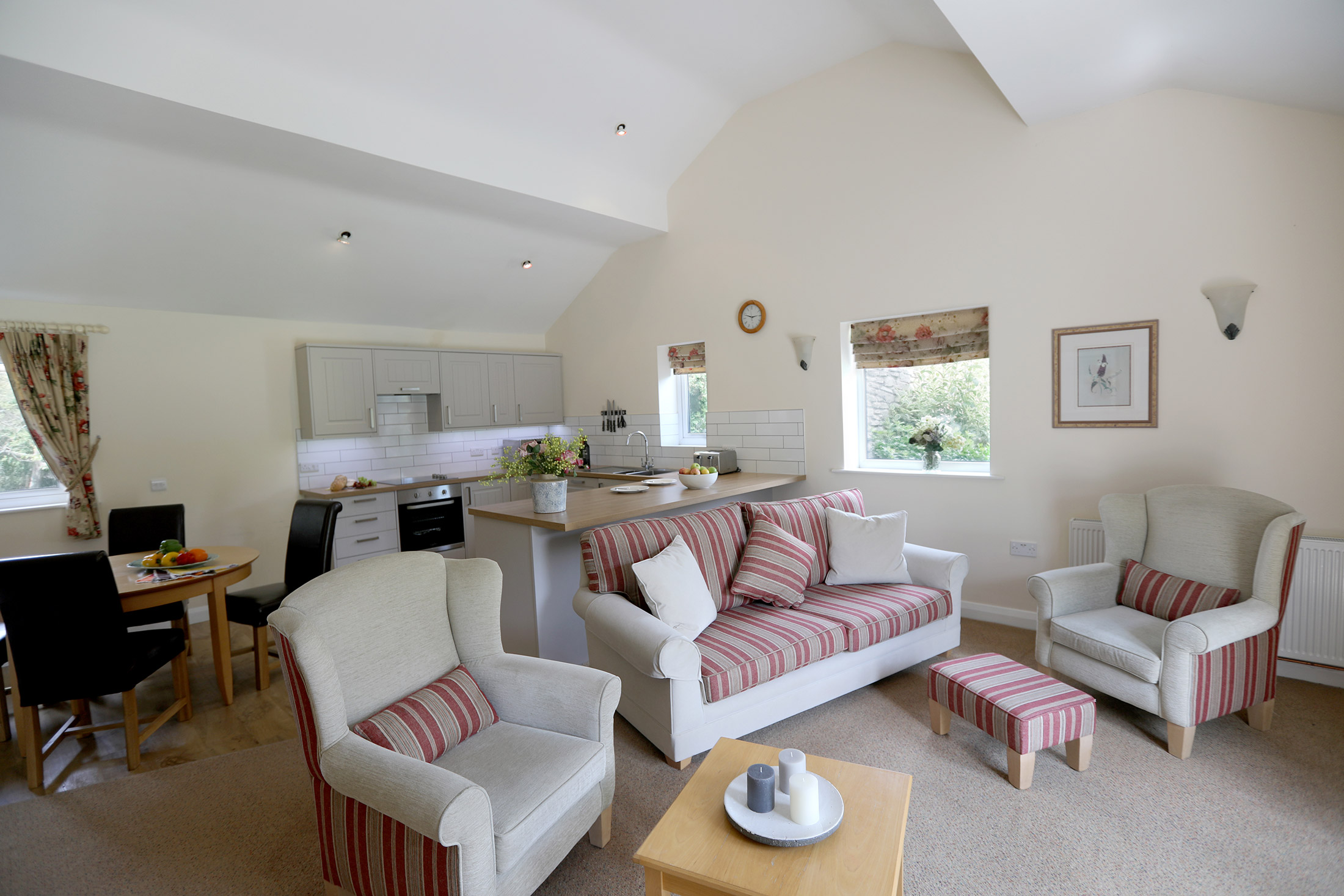
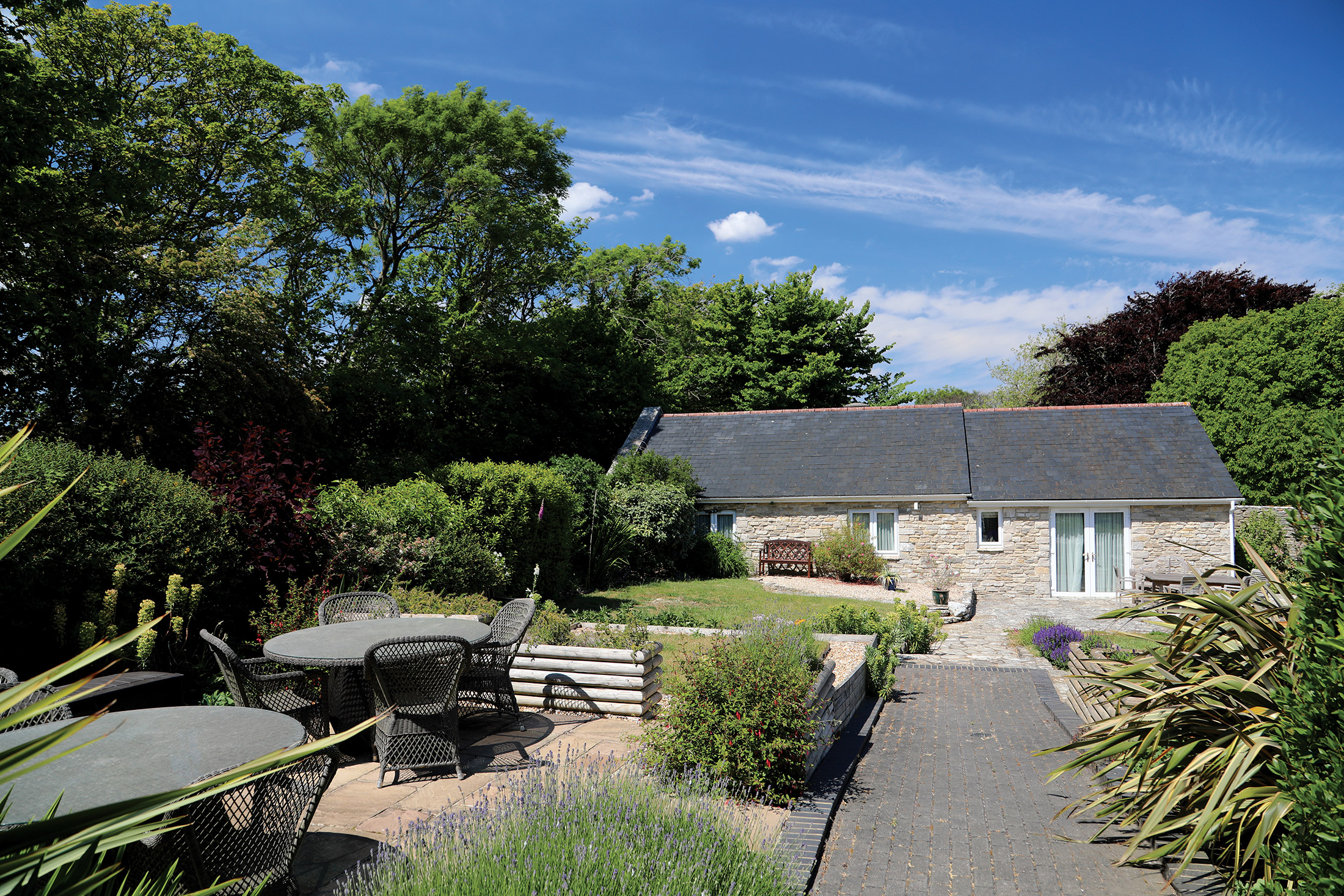
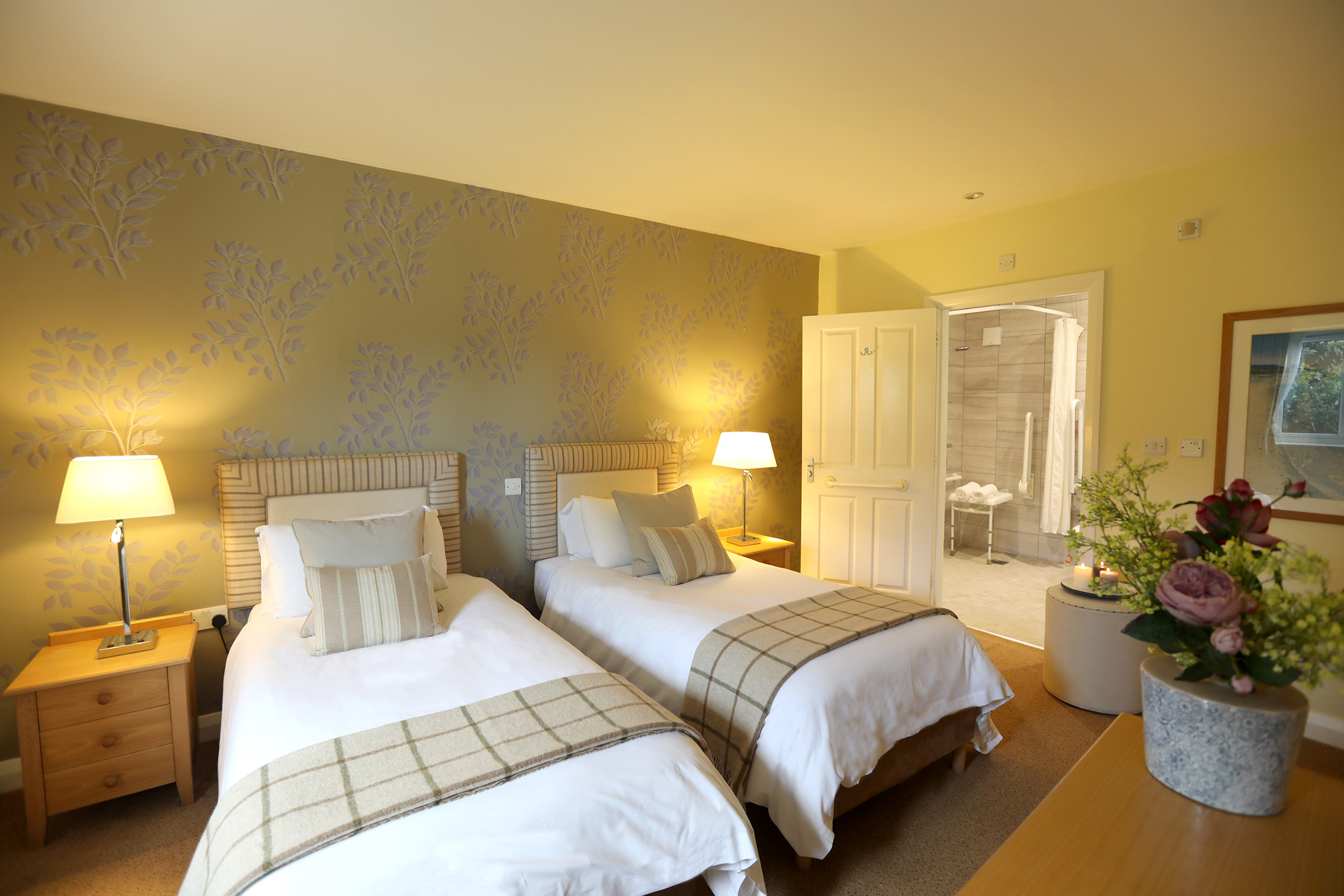
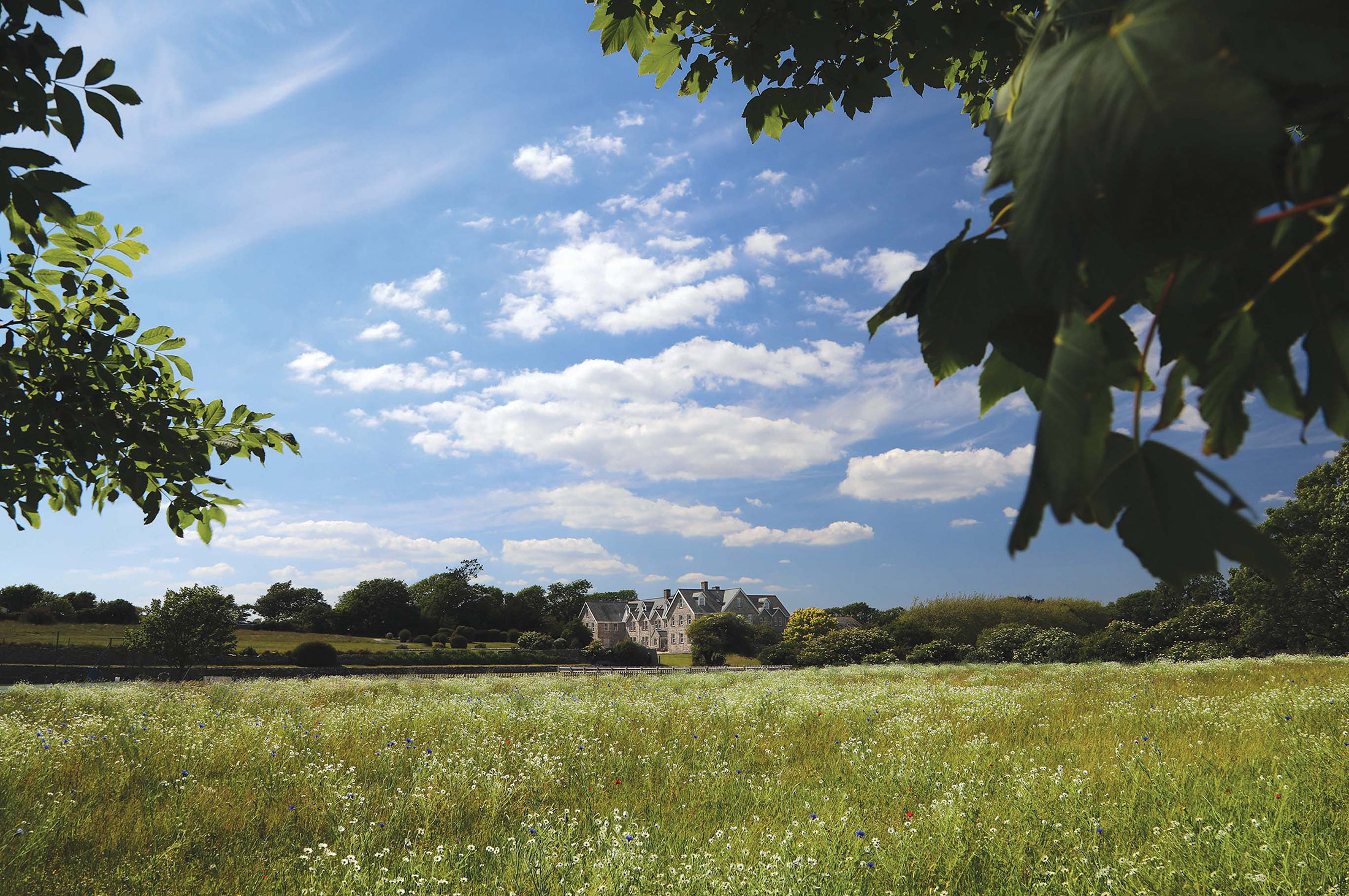
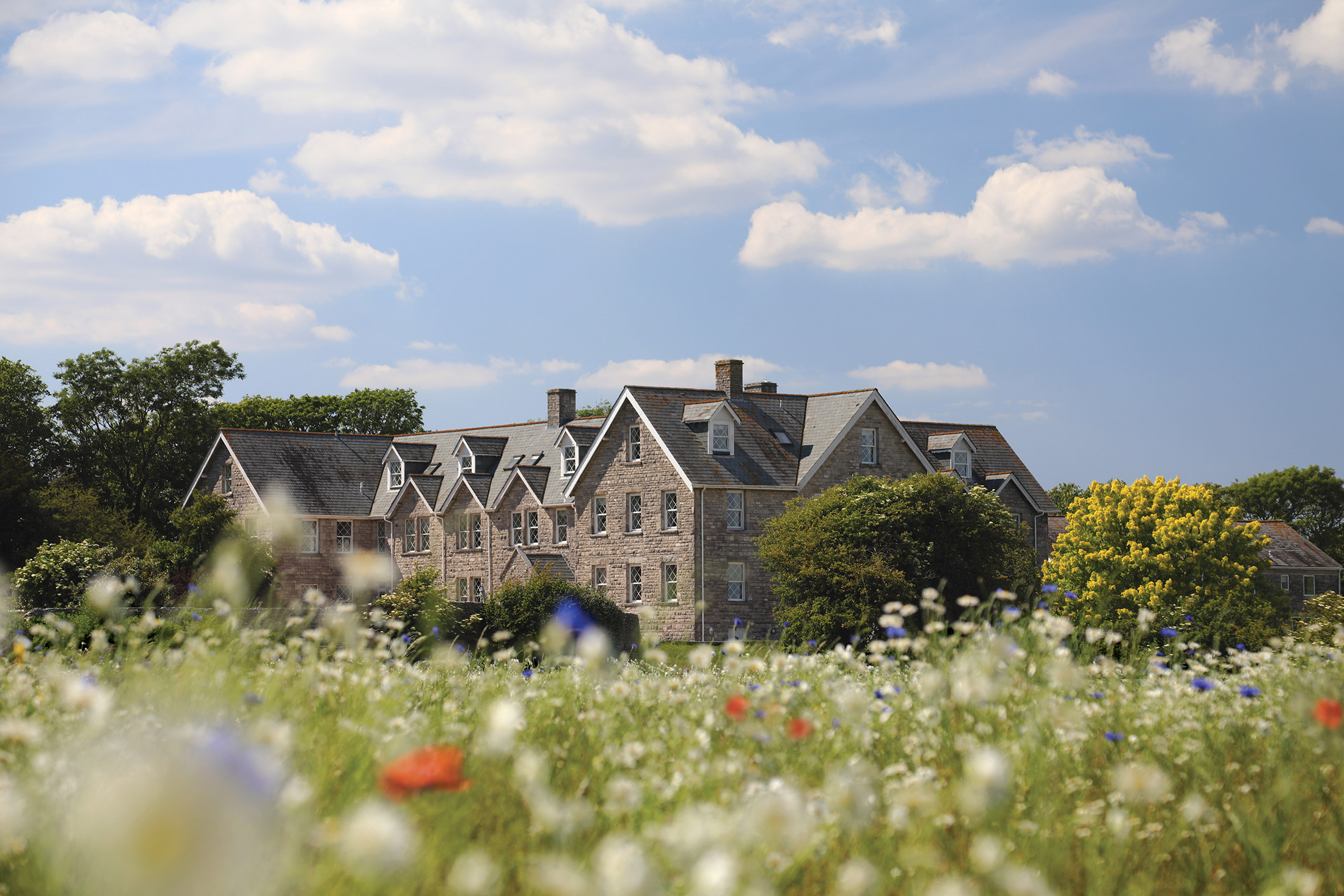
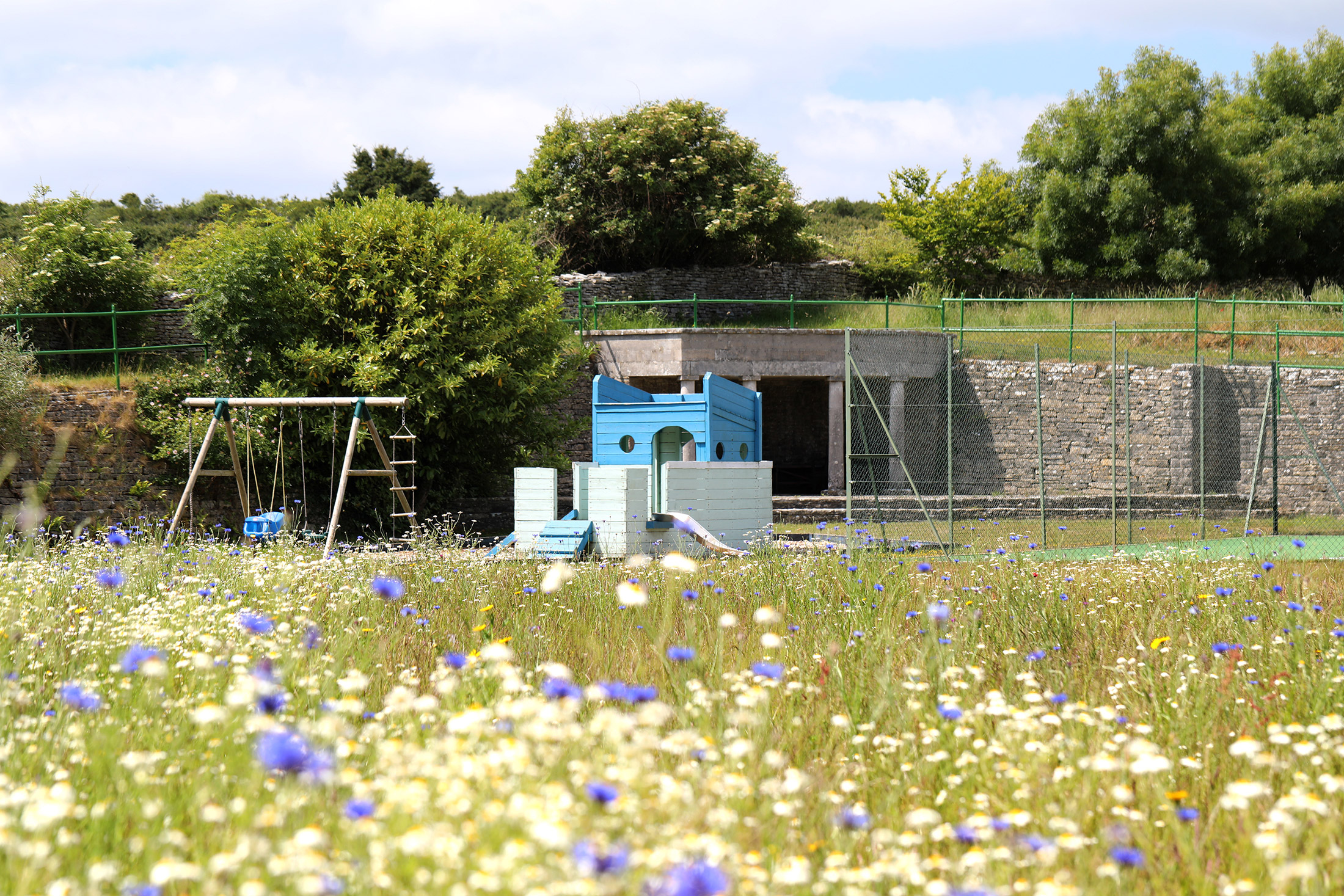
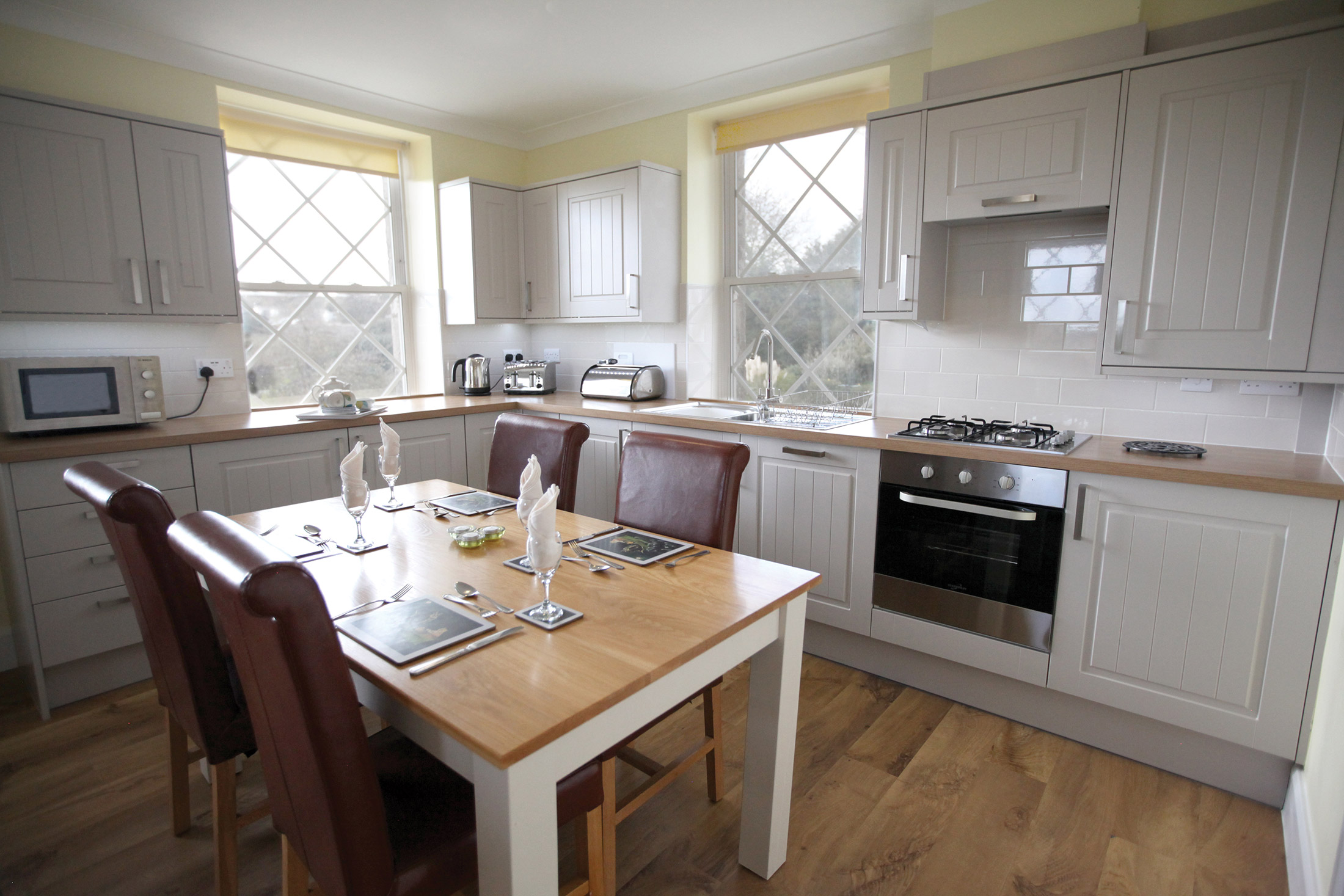
Gallery












Location
HPB Langton House
Durnford Drove
Langton Matravers
Dorset
England
BH19 3HG
Tel: +44 800 230 0391
Email: details@hpb.co.uk
Things to do in Dorset
Dorset is one of the UK’s most popular holiday destinations with no shortage of tourist attractions.
It has an abundance of breathtaking rural and coastal scenery and has been designated an Area of Outstanding Natural Beauty. The county is edged by over 90 miles of coast, making the coastal path a must for any enthusiastic walker.
All over Dorset you will find attractive market towns and tiny villages. It is no wonder the area features in countless TV and film productions, with its unspoilt countryside, plentiful historic houses and gardens and dramatic coastline being used as an impressive backdrop.
Athelhampton House and National Trust properties Hardy’s Cottage and T.E. Lawrence’s Clouds Hill are all within easy driving distance of Langton. The many museums and heritage centres that contain revealing insights into Dorset’s past are also close by.
The Tank Museum at Bovington has possibly the finest collection of tanks in the world. From the first tank ever built to the modern Challenger II, the museum’s definitive collection comprises over 250 vehicles and supporting artefacts from across the globe.
A Slice of History
If it’s museums you are interested in, Corfe Castle Museum (located in the smallest Town Hall in England) offers a great insight into the town’s history, with images and artefacts from Corfe’s past. In particular, it focuses on the local clay, stone and marble industries. Then make your way to the impressive castle itself. Originally built 1000 years ago to defend the principal route through the Purbeck Hills, this fortification now stands in dramatic ruins atop its hill above the town of Corfe.
English Heritage’s Lulworth Castle is a nearby 17th-century castle-like stone building. It is stunning from the grounds and largely unchanged, but the newer interiors, which are open to the public, are equally as special.
Reaching further back in time, the unique Roman Town House in Dorchester has been remarkably preserved and dates from the 4th century. The remains show a number of architectural details including a floor mosaic.
Local sights
The lovely market town of Wimborne Minster and the elegant Kingston Lacy (with its ‘Old Masters’ and red Devon cattle) make a good day out. The National Trust’s Stourhead House and gardens offer lots for all ages. Parnham House, near Beaminster is a beautiful Elizabethan manor house, one of Dorset’s finest, and is surrounded by brilliant gardens.
Don’t forget! Dorset is blessed with unrivalled coastal scenery thanks to the World Heritage Jurassic Coast stretching from Exmouth to Studland Bay. Lulworth Cove, Old Harry and Brownsea Island are just a few of the unmissable places calling your name. And keep your eyes peeled for the local marine life – dolphins favour the waters off the Isle of Purbeck.
Exciting Sports
For active holidaymakers, windsurfing is available throughout the year, as is deep-sea diving. There are spectacular beaches along the Purbeck coast, with Dorset enjoying nearly 100 miles of coastline! Climbers should head to nearby Swanage where the impressive sea cliffs are all within driving distance.
Blog

Sue Barker is making the most of her free time – and you could too.
Posted by Katy Peck on 9 July 2025
Learn more about how Sue Barker, retired broadcaster and Bondholder is making the most of her free time by enjoying holidays with HPB
Read moreLearn more about how Sue Barker, retired broadcaster and Bondholder is making the most of her free time by enjoying holidays with HPB
Read more
Autumn Escapes in France
Posted by Katy Peck on 26 June 2025
From late August to mid-October, France comes alive with les vendanges - the grape harvest. HPB’s three French sites, including St Siméon and Constant, are perfectly placed for a tranquil, enchanting holiday at this remarkable time of year.
Read moreFrom late August to mid-October, France comes alive with les vendanges - the grape harvest. HPB’s three French sites, including St Siméon and Constant, are perfectly placed for a tranquil, enchanting holiday at this remarkable time of year.
Read more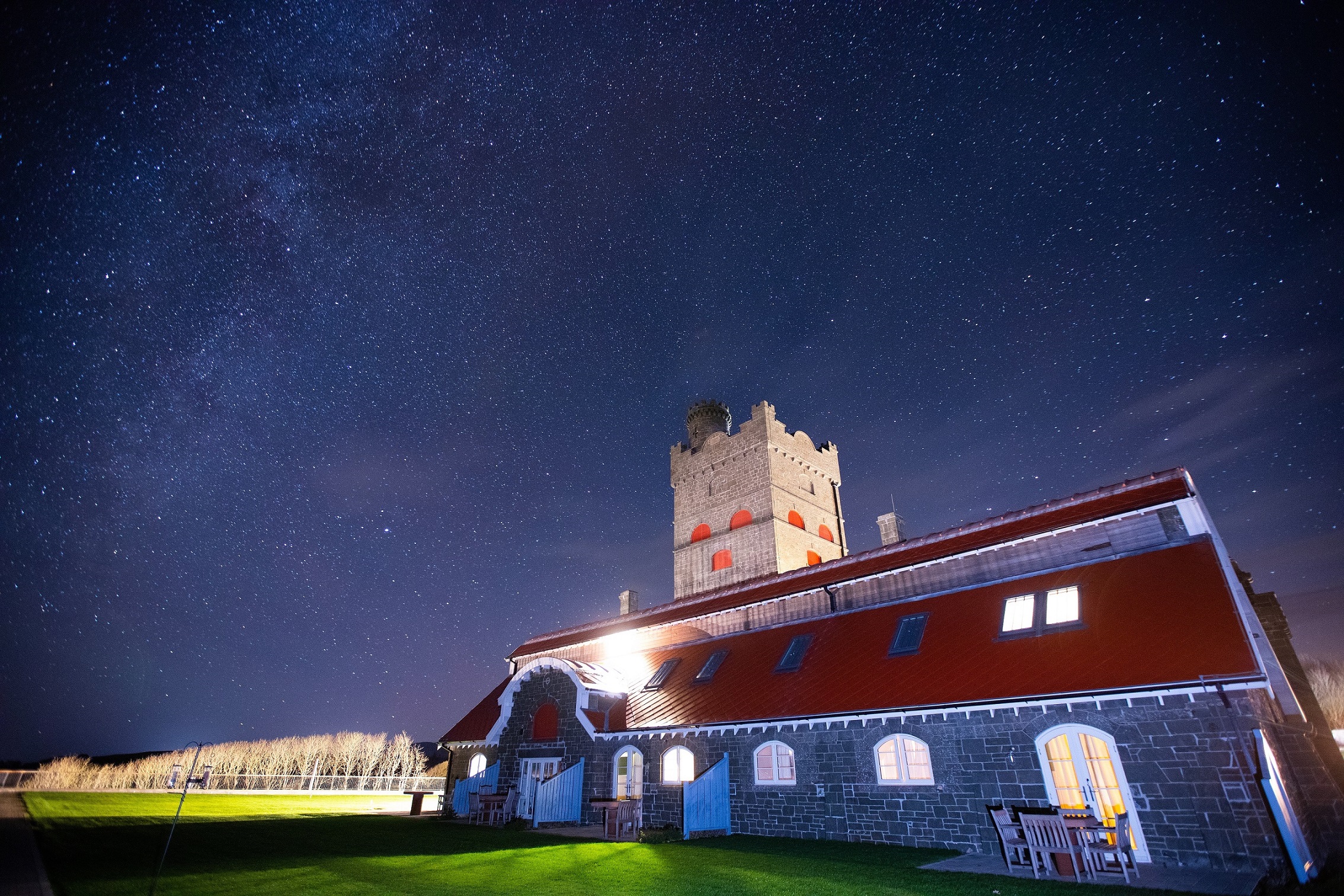
Stargazing Adventures Near HPB Properties: Explore the Night Sky
Posted by Katy Peck on 12 June 2025
From distant galaxies to meteor showers and the shimmering wave of the Milky Way, stargazing brings the beauty of the universe into clear view. Fortunately, some of the UK’s best places to explore the cosmos are just a stone’s throw from HPB locations.
Read moreFrom distant galaxies to meteor showers and the shimmering wave of the Milky Way, stargazing brings the beauty of the universe into clear view. Fortunately, some of the UK’s best places to explore the cosmos are just a stone’s throw from HPB locations.
Read more
Cooking by the Book
Posted by Katy Peck on 2 June 2025
Over a decade ago, Bondholder Dorothy Organ, sadly no longer with us, approached the HPB editorial team with an idea. What if Bondholders contributed recipes linked to their favourite HPB locations, and the collection was turned into a cookbook?
Read moreOver a decade ago, Bondholder Dorothy Organ, sadly no longer with us, approached the HPB editorial team with an idea. What if Bondholders contributed recipes linked to their favourite HPB locations, and the collection was turned into a cookbook?
Read moreView all the latest articles from HPB
Read moreWalks around Langton House
Less than ten miles south west of Bournemouth lies the Isle of Purbeck – a designated Area of Outstanding Natural Beauty, and the source of the fine grey stone and unique dark green marble that bear its name. Rising steeply, in places to over 600 feet, within a mile of the sea, the Purbeck Hills create a dramatic landscape dominated by the striking ruins of Corfe Castle.
Here you will find Langton House, a former school now restored and converted into comfortable apartments and cottages. It is located on the edge of the Purbeck village of Langton Matravers, overlooking the English Channel on the slopes above Swanage, with distant views of the Needles and the Isle of Wight.
Having a Private Tour at an HPB holiday location is an enjoyable way to see the high standards of furnishings and facilities you could enjoy with HPB.
A local HPB Representative will show you around the site and answer any questions you may have.
Alternatively, you are welcome to book a Personal Presentation at a hotel near you. You can chat to one of our local HPB Representatives, ask your questions and view the complete portfolio of HPB locations.
Book a private tourRead our HPB Feefo Reviews
HPB’s holiday booking service has been rated 4.9 out of 5 based on 14,772 customer reviews on Feefo
![]()
What people like you say about HPB
“Buying into the future”
Mike DugdaleI got talking to our next-door neighbour at Barnham Broom, who’s been a Bondholder for a while; the family were full of enthusiasm and, while in no way pushy, was really keen to pass on advice and knowledge about any other sites we’re thinking of visiting. We swapped email addresses and will definitely be in touch – but it shows the strength of feeling about HPB, and the fact that there’s a real ‘family’ aspect to it.
